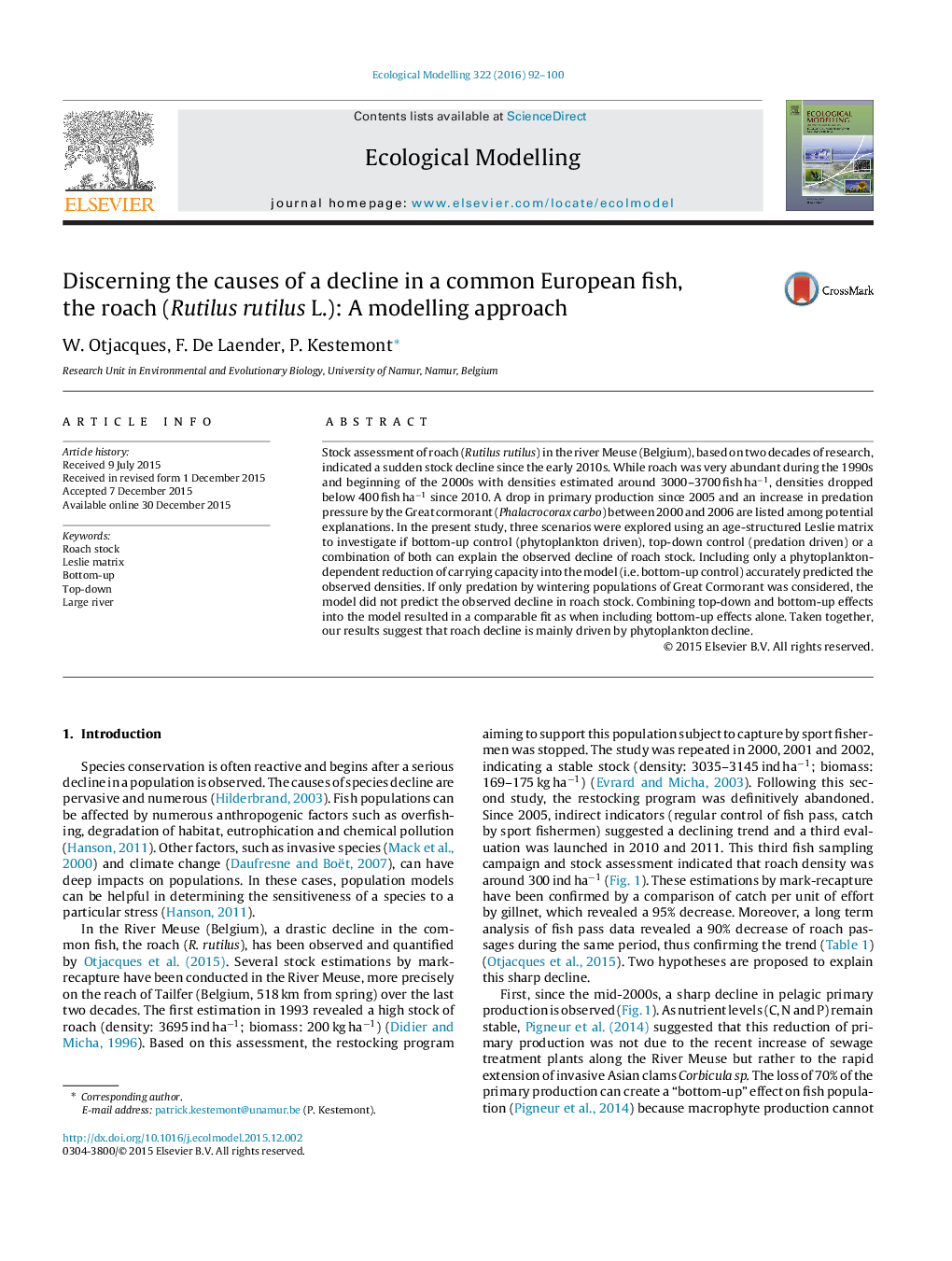| Article ID | Journal | Published Year | Pages | File Type |
|---|---|---|---|---|
| 6296223 | Ecological Modelling | 2016 | 9 Pages |
â¢We modeled roach stock in a large river to determine cause of its decline.â¢Roach stock is mainly driven by bottom-up control.â¢Predation is not the cause of decline as prediction doesn't match with observed data.â¢Future conservation and strategy management should focus on juvenile stage.
Stock assessment of roach (Rutilus rutilus) in the river Meuse (Belgium), based on two decades of research, indicated a sudden stock decline since the early 2010s. While roach was very abundant during the 1990s and beginning of the 2000s with densities estimated around 3000-3700 fish haâ1, densities dropped below 400 fish haâ1 since 2010. A drop in primary production since 2005 and an increase in predation pressure by the Great cormorant (Phalacrocorax carbo) between 2000 and 2006 are listed among potential explanations. In the present study, three scenarios were explored using an age-structured Leslie matrix to investigate if bottom-up control (phytoplankton driven), top-down control (predation driven) or a combination of both can explain the observed decline of roach stock. Including only a phytoplankton-dependent reduction of carrying capacity into the model (i.e. bottom-up control) accurately predicted the observed densities. If only predation by wintering populations of Great Cormorant was considered, the model did not predict the observed decline in roach stock. Combining top-down and bottom-up effects into the model resulted in a comparable fit as when including bottom-up effects alone. Taken together, our results suggest that roach decline is mainly driven by phytoplankton decline.
